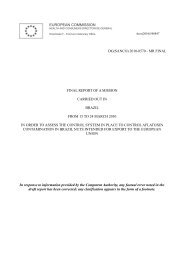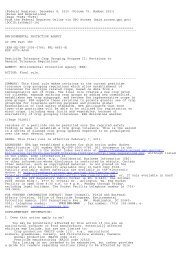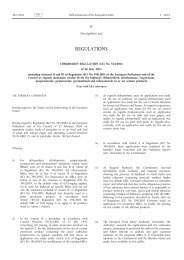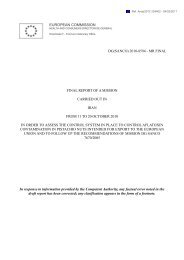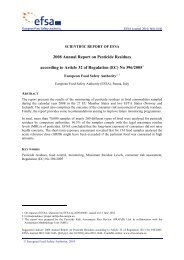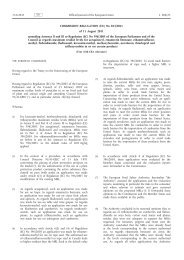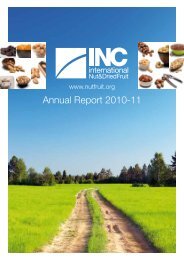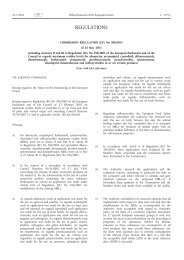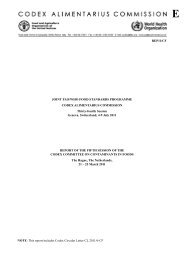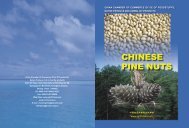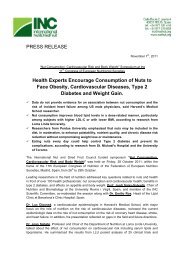REP11/PR JOINT FAO/WHO FOOD STANDARDS PROGRAMME ...
REP11/PR JOINT FAO/WHO FOOD STANDARDS PROGRAMME ...
REP11/PR JOINT FAO/WHO FOOD STANDARDS PROGRAMME ...
You also want an ePaper? Increase the reach of your titles
YUMPU automatically turns print PDFs into web optimized ePapers that Google loves.
<strong>REP11</strong>/<strong>PR</strong> Appendix IX 92<br />
Alternative Representative Commodities<br />
To facilitate the global use of the commodity groups for MRLs, alternative representative commodities may be selected giving<br />
flexibility for use of residue research conducted in different countries or regions that may vary due to regional differences in dietary<br />
consumption and/or areas of production for certain commodities. Table 1 in this document proposes examples of representative<br />
commodities for commodity groups. Depending on country or regional differences, alternative representative commodities may be<br />
proposed by a country. For example, leeks may be proposed as an alternative representative commodity for green onions in the<br />
green onion subgroup of Bulb Vegetables.<br />
Precedence in Selection of Representative Commodities<br />
In situations where a representative commodity does not meet all three of the above principles, a representative commodity should<br />
at least meet the first two principles (likely to contain the highest residues and also major in terms of production and/or consumption).<br />
Definition of Similar Residues<br />
When representative commodities are utilized to extrapolate to other members of a commodity group, it is based on the assumption<br />
that the representative commodities will have similar residues. “Similar residues” are difficult to define numerically, because this<br />
would require knowing actual residues for all commodities in a group. Rather, the expectation of similar residues is based upon<br />
consideration of all of the information available. This information will be prepared for each commodity group and will form the basis of<br />
the proposals for representative commodities.<br />
Use and Combination of Data Sets<br />
When representative commodities are utilized to extrapolate MRLs to other members of the commodity group, MRLs may be<br />
calculated as either the highest MRL calculated for any of the individual representative commodities, and the ALARA2 principle<br />
needs to be considered, or the residue data may be combined and the MRL calculated from the larger combined data set.<br />
Wider Extrapolations<br />
A representative commodity should meet at least the first two principles described above, i.e. likely to contain the highest residues<br />
and also major in terms of production and/or consumption. However, it may not always fit well with the growth habits, or pest<br />
problems of morphology within one group or subgroup. In such situations, extrapolations beyond the members of a commodity group<br />
may be appropriate. These can be considered on a case-by-case basis when commodities (with similar GAPs) have similar size,<br />
shape and surface area. Examples of these possible wider extrapolations include (1) translation of certain stone or pome fruit MRLs<br />
to a tropical fruit; (2) where residues are all



